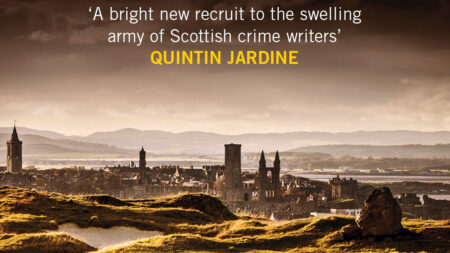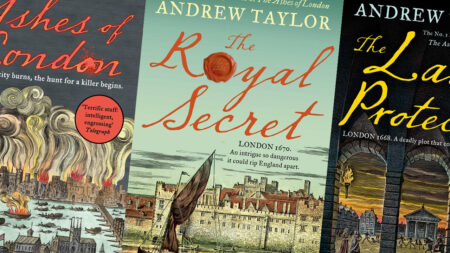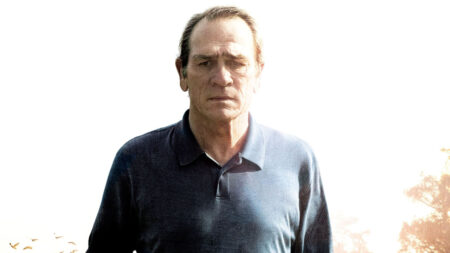Charles Willeford Books in Order (Hoke Moseley)
Charles Willeford (1919–1988) was an American author of fiction, poetry, autobiography, and literary criticism who is best known for his series of novels featuring hardboiled detective Hoke Moseley. War vet Willeford’s first novel, High Priest of California, was published in 1953 before he re-enlisted in the Air Force (he left active duty in 1956). After that, he worked as a professional boxer, actor, horse trainer, and radio announcer, studied painting in France, and returned to the United States to study English literature at the University of Miami. Then he began a long tenure as a book reviewer for the Miami Herald.
That’s when he stopped writing novels for almost a decade. He came back in 1971 with The Burnt Orange Heresy and The Hombre from Sonora. He also wrote the screenplay for the 1974 film adaptation of Cockfighter starring Warren Oates. In 1981, he published Miami Blues, the first of the Hoke Moseley novels.
How to read Charles Willeford’s Books in Order?
Reading The Hoke Moseley Series in Order
Note: Miami Blues was adapted into a movie in 1990 starring Alec Baldwin with Fred Ward as Hoke Mosley.
- Miami Blues (1984) – Ex-con Freddy ‘Junior’ Frenger lands in Miami with a pocketful of stolen credit cards and plans for a new life of crime, and disappears with a snatched suitcase, leaving the corpse of a Hare Krishna behind him. Homicide detective Hoke Moseley is soon on his case, chasing the immoral Junior and his hooker girlfriend through the Cuban ghettos, luxury hotels, and seedy suburban sprawl of Miami in an increasingly perilous game of hide and seek.
- New Hope for the Dead (1985) – In an expensive Miami neighborhood, Sergeant Hoke Mosely, Homicide Division, is called to investigate the lethal overdose of a young junkie. But what seems like a routine OD gives Moseley cause to doubt – particularly when he meets the dead kid’s stunning stepmother. And with his two teenage daughters dumped on him by his troublesome ex-wife, a new beat partner struggling with an unplanned pregnancy, and fifty cold cases to solve, it starts to feel like this little matter of a dead junkie and his beautiful stepmother might just be the answer to Hoke’s prayers . . .
- Sideswipe (1987) – Hoke Moseley has had enough. Tired of struggling against alimony payments, two teenage daughters, a very pregnant, very single partner, and a low-paying job as a Miami homicide detective, Hoke moves to Singer Island and vows never to step foot on the mainland again. But on the street, career criminal Troy Louden is hatching plans of his own with a gang including a disfigured hooker, a talentless artist, and a clueless retiree. But when his simple robbery results in ruthless and indiscriminate bloodshed, Hoke quickly remembers why he is a cop and hurls himself back into the world he meant to leave behind forever.
- The Way We Die Now (1988) – Sergeant Hoke Moseley is struggling: his division chief is making ominous plans for him, a man he sent to jail for murder has moved in across the street, and he’s stuck on one of his toughest cold cases yet. So the last thing he needs is to be sent undercover just as he’s beginning to make some headway with his work. South of Miami, he is taken as a migrant worker to a farm where rumors of murder and slavery are rife. With only a Filipino prostitute and his own wits to protect him, Hoke faces vicious rednecks and his own scheming boss in this funny, vibrant masterpiece of hard-boiled fiction, the final Hoke Moseley.
Other Charles Willeford’s Books
The following books are listed in publication order. Note: Some of Charles Willeford’s books are now really hard to find. Charles Willeford also published poetry, short stories, and nonfiction books, but those are not listed here.
- High Priest of California (1953) – The story centers on San Francisco used-car salesman Russell Haxby, a highly unpleasant character, who, motivated perhaps by sheer boredom, engages in small-time cons and seduces a married woman.
- Pick-Up (1955) – The unblinking story of two lost and self-destructive drifters-a failed painter working as a counterman in a cheap diner and a woman in flight from domestic violence-trying to find a place for themselves in the back streets of San Francisco.
- Wild Wives (1956) – Jake Blake is a private detective short on cash when he meets a rich and beautiful young woman looking to escape her father’s smothering influence. Unfortunately for Jake, the smothering influence includes two thugs hired to protect her – and the woman is in fact not the daughter of the man she wants to escape, but his wife. Now Jake has two angry thugs and one jealous husband on his case. As Jake becomes more deeply involved with this glamorous and possibly crazy woman, he becomes entangled in a web of deceit, intrigue – and multiple murders.
- The Black Mass of Brother Springer (aka Haney Gal, 1958) – the story of Sam Springer, a drifter novelist who meets Jack Dover, the retiring Abbot of the Church of God’s Flock. Dover’s final official act is to ordain Springer and send him off to serve as pastor of an all-Black church in Jacksonville, Florida. Springer soon becomes entangled in the city’s growing civil rights movement…and with the church deacon’s earthy young wife, Merita.
- Made In Miami (Lust Is a Woman, 1958) – Art student Ralph Tone is working in Miami as a bellboy. He meets Hollywood hopeful Maria Duigan and falls head over heels for the ambitious beauty. As Ralph fuels his obsession by booze, pills, and lack of sleep, they both quickly become entangled with sleazy pornographer Donald McKay.
- The Woman Chaser (1960) – By day, Richard Hudson, woman-chaser and used-car salesman, works his crooked car lot with much success. By night, he returns home to a family of misfits. One day, seized by a feeling of terror and revulsion, he realizes he’s wasting his life in the meaningless pursuit of money. His only hope, he decides, is to pursue his dream of making a movie. Richard completes his cherished project, but forces beyond his control swiftly reject and destroy it. As a result, enraged and humiliated, he goes on a bender of epic proportions, drinking his way through the underbelly of Los Angeles and exacting a monstrous revenge on all who have crossed him.
- Deliver Me from Dallas! (aka The Whip Hand, 1961) – Lash by bloody lash, the she-devil from Dallas would get her revenge.
- Understudy for Death (1961) – Why would a happily married Florida housewife pick up her husband’s .22 caliber Colt Woodsman semi-automatic pistol and use it to kill her two young children and herself? Cynical newspaper reporter Richard Hudson is assigned to find out – and the assignment will send him down a road of self-discovery in this incisive, no-holds-barred portrait of American marriage in the Mad Men era.
- Cockfighter (1962) – Frank Mansfield is the cockfighter, a man obsessed with an illegal sport which is unspeakably cruel, unthinkably bloody – and incredibly exciting. His pursuit of the champion’s medal takes him into the seamy underbelly of rural Southern life – into the hot, dusty small-town circuits, where greed and corruption vie only with lust and violence . . .
- The Burnt Orange Heresy (1971) – Fast-talking, backstabbing, womanizing, and fiercely ambitious art critic James Figueras will do anything-blackmail, burglary, and beyond-to make a name for himself. When an unscrupulous collector offers Figueras a career-making chance to interview Jacques Debierue, the greatest living-and most reclusive-artist, the critic must decide how far he will go to become the art-world celebrity he hungers to be. Will Figueras stop at the opportunity to skim some cream for himself or push beyond morality’s limits to a bigger payoff?
- The Difference (The Hombre from Sonora, 1971) – Set against the sweeping panorama of Arizona circa 1880, this work has many of the surface trappings of a standard western. However, from the first shocking realization that the line between good and evil is being overstepped, the author then begins to dismantle the American cowboy myth.
- Kiss Your Ass Good-Bye (1987) – A man’s life is threatened when he discovers his new lover is married.
- The Shark-Infested Custard (1993) – Larry Dolman is a rather literal minded ex-cop who now works private security. Eddie Miller is an airline pilot who’s studying to get his real estate license. Don Luchessi is a silver salesman who’s separated from his wife but too Catholic to get a divorce. Hank Norton is a drug company rep who gets four times as many dames as any of the other guys. They are all regular guys who like to drink, play cards, meet broads, and shoot a little pool. But when a friendly bet goes horribly awry, they find themselves with two dead bodies on their hands and a homicidal husband in the wings-and acting more like hardened criminals than upstanding citizens.
What should you read if you like Charles Willeford’s novels?
As crime novelist Lawrence Block said it: “Willeford wrote quirky books about quirky characters, and seems to have done so with a magnificent disregard for what anyone else thought.”
If you like our Charles Willeford reading order, you may be interested in the novels by Jim Thompson (“The Killer Inside Me” or “Pop. 1280”), Elmore Leonard (“Get Shorty” or “Out of Sight”), James M. Cain (“The Postman Always Rings Twice” or “Double Indemnity”), Donald E. Westlake (“The Hot Rock” or “The Outfit”), and of course Lawrence Block (“A Walk Among the Tombstones” or “The Burglar Who Liked to Quote Kipling”).






















